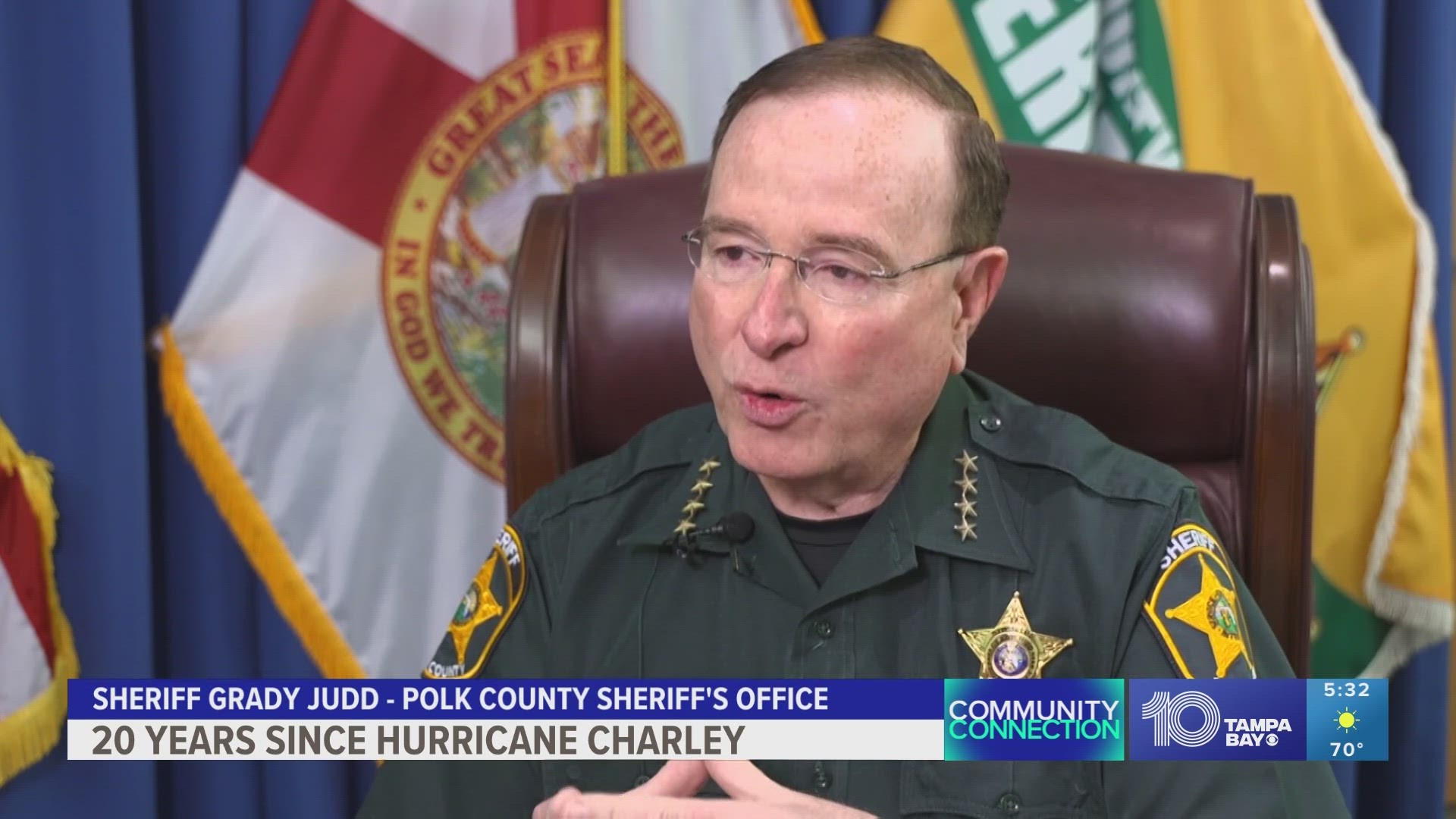LAKE WALES, Fla. — This year marks the 20th anniversary since Hurricane Charley wreaked havoc on parts of the Sunshine State.
During the hurricane season of 2004, storms accounted for nearly $40 billion in damage collectively and killed nearly 100 people, according to the Florida Department of Health.
The first storm to hit Florida that year was Tropical Storm Bonnie on Aug. 12, 2004. Bonnie struck the Florida Panhandle with sustained winds of 45 mph.
Just one day later, Hurricane Charley made landfall in Charlotte County on Aug. 13, 2004. It was roughly a 30-hour period of rapid intensification as people living in Southwest Florida up to Polk County braced for severe impacts. Charley was a Category 4 hurricane with sustained winds of nearly 150 mph.
The hurricane caused catastrophic damage to coastal and inland communities. People living in Polk County explained that 20 years later, Charley will never be forgotten.
"I remember vividly because right at 7 p.m., everything just went dark," Lake Wales resident Kat Gate-Skipper said.
Back in 2004, Polk County Sheriff Grady Judd served as a senior colonel for the sheriff’s office. He remembers leaving his family behind as he clocked into work to keep his community safe.
"My wife, children and my parents, who were not young, were going to be by themselves because my team was going to be out looking out for the people of Polk County," Judd recalled.
With the wind speed from Hurricane Charley so dangerous, those at the Lake Wales Fire Department kept the firetrucks inside during the storm. With that, the fire department wasn’t answering calls.
Judd explained the sheriff’s office felt it was necessary to keep people safe during the hurricane. He remembers making the call that deputies would still go out with a paramedic to respond to life-threatening emergency calls as Hurricane Charley made landfall.
“We went into treacherous, dangerous environments to help people get to the hospital that were suffering a life-threatening emergency. There were people alive and well from medical events after Hurricane Charley that surely would’ve died if it had not been for our brave deputies,” Judd said.
Those at the Lake Wales Fire Department remember the moment they were cleared to open the bay doors and send the trucks out to respond to calls after the storm. More than 300 emergency calls were pending for firefighters to respond to when the storm passed.
“Once winds reached 60 mph we shut everything down,” Lake Wales Deputy Chief Travis O’Bryant said.
The issue with responding to emergency calls in the aftermath was the amount of downed trees. Main roads were blocked by giant oak trees that uprooted. O’Bryant recalled firefighters sitting on the front bumper of the firetrucks with chainsaws and physically cutting trees out of their path so they could respond to emergencies.
“We’re not talking about limbs either, some of them were huge trunks,” O’Bryant added.
In the aftermath, it took communities in Polk County months to clean up. Judd remembers there was so much devastation and it created a long wait time for repairs.
“It took more than a year to get your roof repaired so we had blue roofs in this county for a very long time,” Judd stated.
Residents remember not having power for weeks. It was a hot summer, but the heat was the least of their worries when the weather reports called for more hurricanes.
Polk County also suffered damage from Hurricane Frances which made its initial landfall in Martin County on Sept. 5, 2004. As a Category 2 hurricane, Frances produced a serious storm surge. People remember flooding being a big issue once the storm passed through Polk County.
"So many families that were already just one paycheck away from poverty and you feel sad for them," Gate-Skipper said.
Unfortunately, that wasn't the end of hurricane season for Polk County. Hurricane Jeanne struck Sept. 26, 2004. This Category 3 hurricane had sustained winds of 120 mph.
When thinking back on hurricanes Frances and Jeanne, first responders remember there wasn't much more damage that could be done besides more flooding.
"Even though they were bad, they didn’t seem as bad because the tree population, Charley really wiped it out," O'Bryant added.
Looking back 20 years ago, many who responded to the aftermath said there were lessons learned.
"We learned a lot of things. We created push teams after that. Our recovery units operated out of our agriculture center, now we have an emergency operation center," Judd stated.
At the time, the agriculture center was small and not equipped with the technology Polk County officials now have access to in their emergency operations center. The new center also allows more personnel to work out of the center. That allows for more communication during a storm.
"It has been a very long time since Polk County had seen the type of impact that we saw in Hurricane Charley," the Emergency Management Director in Polk County, Paul Womble, stated.
Now Polk County officials feel confident they can respond to a storm better than they did in 2004.

